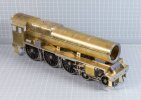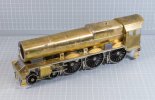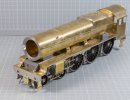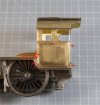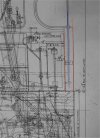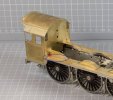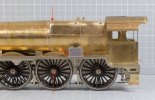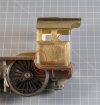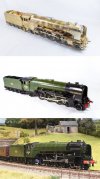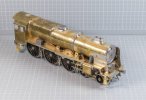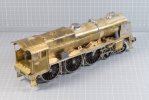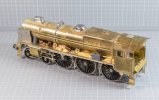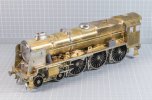Ian@StEnochs
Western Thunderer
Well now, there's a point worth expanding on.
First off drawings will be the source information, I have very little faith in anything on this DA, or any DA kit, being 100% accurate. That's not a hidden criticism but an observation from building the kits; possibly because when the kits were drawn out the information wasn't available at the time (NRM library).
Second, depicting weighted engines on springs, some points to consider.
If you hadn't have mentioned it, would anyone know the difference.
You have mentioned it and I don't bother, would anyone notice the difference.
If I do add it, do I now to go back and alter all the tender axles boxes/springs to suit whatever coal load I put in, typically most kit tender springs are near empty.
If I do add them, should I then replace the kits passing nod to the J hanger profile to suit the more accurate springs with weight compensation.
If I make new J hangers should I then upgrade all the brake hangers, pivots and shoes.
If I make new brake gear should I then make all new accurate frame spacers.
If I make all new frame spacers should I now make new plate frames to the correct profile.
Where do you stop
On a green field site you can tailor everything to match, the DA kits are brown field sites and you're always going to be dragged back by the lowest denominator, therefore is there any real point adding bits that are 100% accurate when the rest of the model is barely 80% accurate?
For the record the springs will be weight compensated, simply because it takes no extra effort at all to draw the curved lines at a shallower radius. I have no idea what that radius will be, the drawings show an empty engine and I have no clue how much Royal Scot driving wheels deflect when fully loaded. In short I'm going to 'best guess' which then begs the question, if I don't know does anyone else and will they be able to tell the difference
The weight of a loco in steam will vary very little as the boiler will always be filled too around, give or take 3", the same level. However tender weights will vary throughout the working day from max coal load and full tank to stour and dregs! Virtually all modellers make the tender footplate at the same level as the loco but photos show the variations.


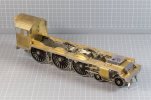
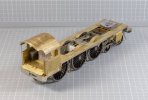
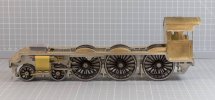
 bahh
bahh 

 The half etch ledge at the front for the wrapper is only half a former thick (0.35 mm) which makes fixing it later a bit of a faff, you can take the inner former down all the way around and end up with a 0.7 mm ledge to work with. There's plenty of wrapper at the rear to take up the extra 0.35 you'll need.
The half etch ledge at the front for the wrapper is only half a former thick (0.35 mm) which makes fixing it later a bit of a faff, you can take the inner former down all the way around and end up with a 0.7 mm ledge to work with. There's plenty of wrapper at the rear to take up the extra 0.35 you'll need.